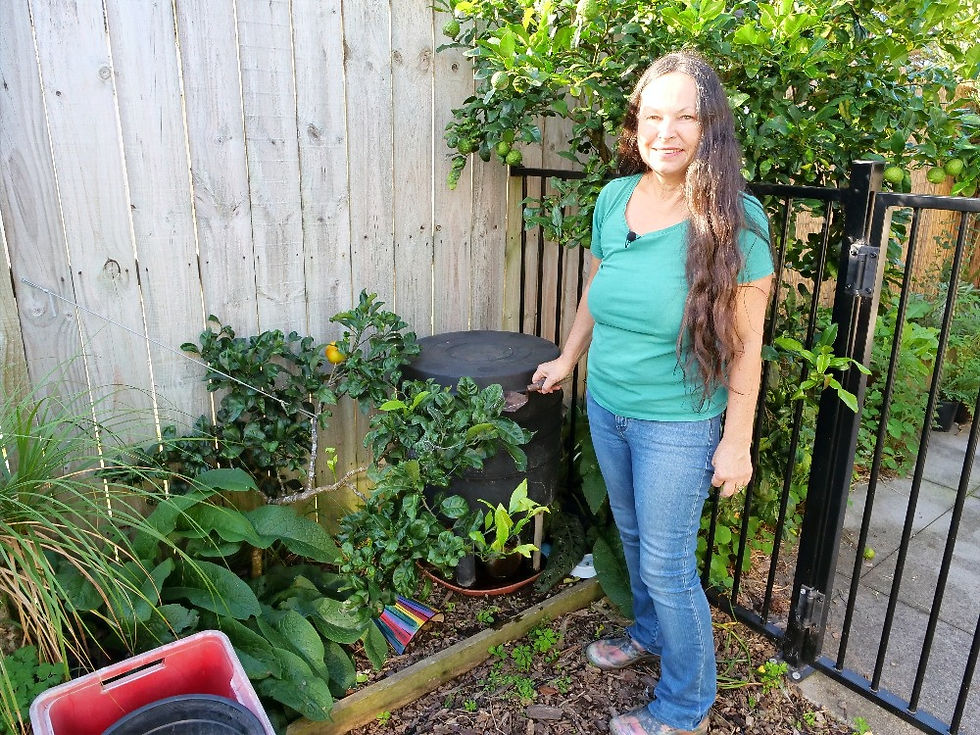Herbs You Can Happily Plant Together
- Toni Kenyon

- Apr 27, 2021
- 4 min read

Like most of us, Herbs like to hang out in groups. You'll have better results in your Herb garden if you group your herb plants based on their particular needs.
Most herbs will grow happily together as long as they have good soil, water and plenty of sunshine. Growing herbs is not hard and you can grow your herbs indoors and outdoors (outdoors is always my preference) but I have the luxury of a reasonable amount of land to use for my herb gardens.
Even if you are growing herbs in boxes on your balcony, or in pots in your kitchen, there are still some herbs that are better bed mates than others.
Read on to see which herbs grow well together:
Water-Loving Herbs
Basil (Ocimum basilicum), Coriander/Cilantro (Coriandrum sativum), Parsley (Petroselinum crispum) and Tarragon (Artemisia dracunculus) co-habit happily. They like a good deal of moisture in their soil, so they can be planted together but they wouldn't do so well with the Mediterranean herbs (described below). Planting herbs together that require the same kind of conditions makes caring for them, on the whole, a lot simpler for you. No need to worry about overwatering this group of herbs.
The Mint family
With over 600 varieties to choose from--this is a large family. I like to keep most of my mints (Mentha) corralled together in large pots or planter beds. This family (to name just a few) includes the familiar peppermint and spearmint plus some (possibly) unfamiliar family members such as orange mint, apple mint, chocolate mint, lemon balm and even catmint.
Keep your mint family tucked safely inside their pots, or planted together (where they won't strangle out other precious herb plants) because they have a habit of taking over the entire herb patch. They can be promiscuous little plants too--some may cross-pollinate and you can end up with some interesting new members of your mint family.
Mints love damp, shady spots in the garden, so if you are tempted to plant them out, put them under fruit trees or in boggy marginal areas, which are probably places that lots of other plants wouldn't be happy growing anyway.
Mediterranean Herbs
Sometimes thinking about where your herb originally comes from will give you a clue as to the kind of conditions it will enjoy in your garden or growing environment.
Mediterranean herbs come from a warm, dry environment, so it stands to reason that you can group them together because they're going to enjoy sunny, hot and dry conditions similar to those in the Mediterranean. Examples of Mediterranean herbs are: Rosemary (Salvia rosmarinus), Sage (Salvia officinalis), Thyme (Thymus vulgaris), Oregano (Origanum vulgare), Lavender (Lavandula) and Marjoram (Origanum majorana). This group can be planted together due to their similar soil and climate needs.
You'll also notice that all of the herbs in the Mediterranean group have small leaves that are oftentimes a light shade of green, or even silver (unlike the water-loving herbs we've already talked about). That's another clue that these herbs have evolved to live in hot and dry conditions. The less leaf surface they have available to hot, drying winds, or their ability to reflect the heat of the sun, means they have more chance of surviving in a hot and dry environment.
Herbs Make Great Companion Plants
Culinary combinations like basil and tomatoes not only go well together on the plate, but they also grow well together in the garden. I love seeing the little happy heads of bushy Basil growing below my tall tomato plants in summer.
Chives and carrots make another great culinary combination and they also grow well alongside each other in the garden
Herbs will happily grow in amongst your salad greens and many herbs help with pest control, due to their volatile oils and scent, deterring many unwanted pests in the vegetable and salad garden.
I'm putting together a printable that you can download and keep in your garden journal setting out herb companions, so keep an eyes peeled for that coming soon.
Use Pots
The easiest way to begin growing your herbs (and the way I started out) was by purchasing large pots and tubs.
That meant I had complete control over the micro-climates I was creating for each of my small herb collections.
I had a pot of various mints. A pot of Thyme varieties and then a pot for my water-loving greens.
The pots were easy to manage and looking after a few herbs that had similar needs meant that I got to know them sooner and because I wasn't overwhelmed by trying to look after a huge garden space, I also used the herbs that I grew.
A warning: starting small doesn't mean that you won't end up big. Herb collection can become a dangerous and addictive hobby. Ask me how I know this!
Take the time to get to know each individual herb, where it likes to grow, how it likes to grow, what you can use it in and you'll increase your herbal knowledge in no time.
You'll also have healthier and happier herbs that will reward you with plenty of fresh flavours for your meals, herbal teas and other herbal uses.
Happy growing.
Toni

Pick up my free download and learn about 4 herbs you can include in your own kitchen herb garden.
Just fill in your email address below and click the button and you're all set.
Don't forget to email me (use the 'contact' page) and let me know how your herb garden is growing, or let me know what else you'd like to learn about herbs.







Comments